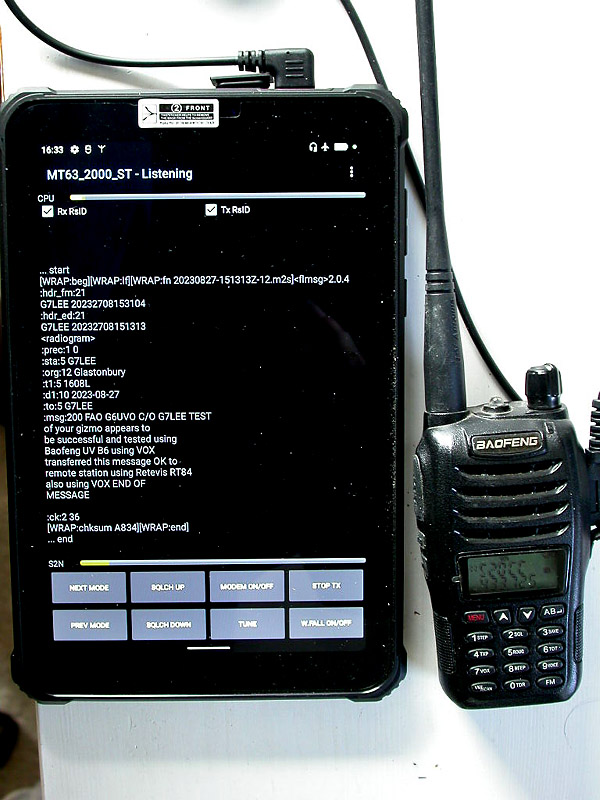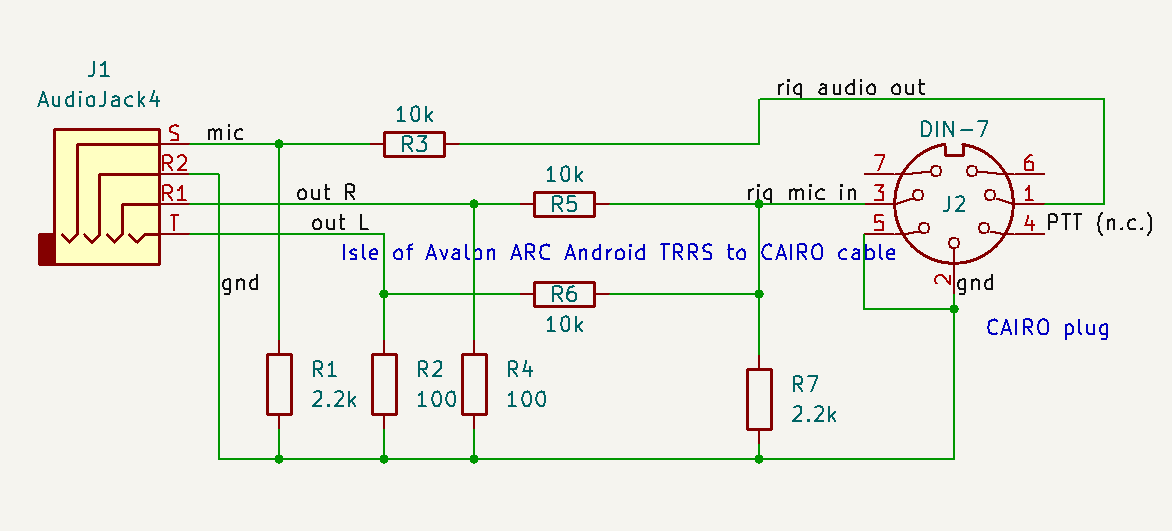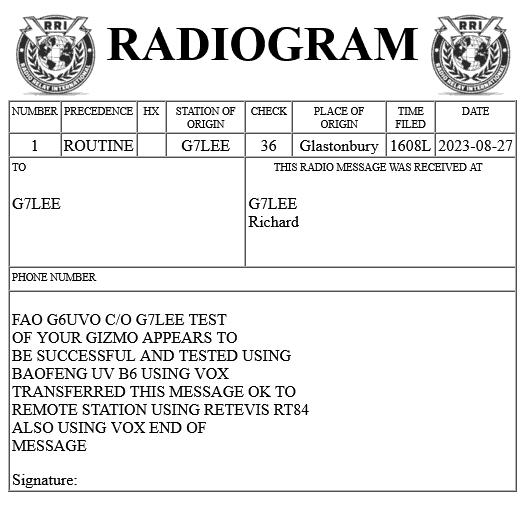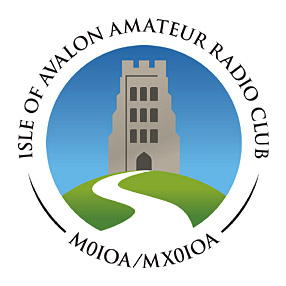FLDigi over Android on 70cms FM with andFLmsg
This an Amateur Radio take on a similar theme as Meshtastic which we experimented with last year, text comms in an group out of mobile phone range, this time using the handheld rig you already have with an Android tablet. I have to admit, normally when I hear the term Android1 in connection with amateur radio I switch off.
Firstly I don’t find mobile phones fascinating. Then if you have in your hand an expensive fondleslab with billions of dollars of capital investment in networks connecting it to more than half of Earth’s population and the Internet to boot and you have the urge to communicate, I’m of the view just sweat the asset - use it in the way its makers intended. Even if the other party is a radio amateur they’ve probably got a phone ;)
Meshtastic showed the promise of the Android screen/keyboard as an interface, they use Bluetooth for low power connection to their app. John VK2ETA has written an app called andFLmsg that bundles FLDigi’s suite of digital modems together with the idiosyncratic message wrappers of FLMsg, which present structured data as a facsimile of a paper form. I’ve never really understood the point of FLMsg, but I have never served on an emcomms team so perhaps there is a point I am missing. The picture is a raw dump of the FLMsg data, Chaz’s tablet is a little bit too small to show the radiogram form even if I hold it landscape mode. I’d imagine the FlMsg experience is miserable on a phone, though you can scroll the image.

You can download the apk at sourceforge and there is a Github repository for code fans if you have an Android development system. Users have to sideload the app, rather than install from Google Play. Chaz G6UVO pioneered this in IoAARC, and it uses FLdigi on VHF/UHF. My experience with FLDigi was from HF experiments, but some of the faster modems are designed for the more predictable shorter range signal paths you get on 2m and 70cm FM. Unlike the antediluvian Bell 202 standard that regular APRS is stuck with, FLdigi uses DSP to do rather better - the MT63-2000 modes run at 200 wpm, and because they send the entire message there is not the encapsulation and transmit/receive delay overhead of packet. The downside, of course, is that these signals are not routable, this is an end-to end transmission. andFLmsg can do some of the other modes like Olivia and various PSK modes, these are a poor match for an FM channel, though of course you can use the tablet with a HF rig like the Icom 705, Yaesu 817/8, Xiegu HF rigs or Elecraft KX series and use some of the more HF suited modems. You can’t use the WSJT modes with andFLmsg.
G6UVO used a USB APRS cable. This uses USB OTG to provide an alternative audio interface to the Android tablet/phone. You can only have one active audio interface on Android at any one time, unlike on a PC, so I went for the gonzo solution, wiring from the tablet TRRS audio cable through a 10k series/2k2 to ground from each audio output to the mic input. Tablets are too clever by half and require a shunt resistance of ~100 ohms on the headphone output, and a load of about 2k2 to ground on the mic port to decide that there is a headset connected. The andFLmsg manual gives you a pointer for wiring an audio cable in the back of the manual, though that’s designed for a rig using a dynamic mic.
wiring the TRRS to Baofeng cable
I already had a CAIRO wired interface to the Baofeng UV-B6. The TRRS cable is wired as per the CTIA variant of the Android interface specification, I used 100 ohm resistors to simuate the headphones and convince the tablet there was an audio accessory connected, the 2k2 resistor to ground on the mic is there to simulate an electret mic and activate the mic input.

CAIRO to Android cable.
Note if you are wiring directly to the two-pin connector then you may need a 0.1uF capacitor in series with the radio mic input, as the radio uses a DC path to ground as the PTT signal. The accessory PTT switch usually connects the earthy end of the electret mic insert to ground, providing the DC path.
Audio signal levels are quite critical using the direct audio cable method, I needed to run my Baeofeng UV-B6 with the volume control almost flat out, whereas the Retevis RT84, which is quite low-end but has a prodigiously loud audio output had to be racked hack to audio output 2 (out of the limted 8 steps) to be decoded right. You may find an audio recorder app on the tablet that shows the waveform useful to line the signal up. The other way I used a RSP-1A to monitor the RF and AF signal from the transceiver. I was a little bit short of grunt from the tablet to the rig, hence the use of both audio channels into the mic input, even then I had to set the media audio up towards the maximum, when the Android nanny warning of don’t listen to music too loud came up.
Chaz’s APRS cables were a little bit less finicky2 on levels, so you pays your money, you takes yer choice. Neither option does PTT so you have to set your rig up for VOX. VOX users have a bad rap on packet because the TXdelay could sometimes clip your packets, but if you use RSID on andFLmsg you have the long-ish transmit time of tens of seconds and the initial tune signal; you’ll be fine and the VOX delay is not a large part of the signal time. I had to really push VOX on the Baofeng to 9, whereas the RT 84 I simply checked the vox checkbox for that channel and it was whatever the default was - you don’t get to change it. A nice touch was that the RT 84 lets you set VOX per channel, wheres the Baofeng it is set for the rig as a whole. I discovered in this exercise that my trusty 1990s Kenwood TH-D7 didn’t do VOX at all. It’s perfectly possible to key up the rig manually as soon as you press the Tx button in the software and release PTT when the software says it’s done, but it isn’t gracious living.
if you play this signal into FLDigi on the PC you will get the above message.
conclusion
andFLmsg is an interesting addition to the amateur radio digimode armoury. Unlike the FLDigi main application, the non-FLMsg interface has different screens for TX and RX messages which limits the usefulness of the interactive mode, sending text without FLMsg encapsulation, and you have to swipe left/right to swap screens between overs. You don’t get the macros of the FLdigi program either, but if you use it with FLMsg as intended it isn’t a huge problem, as that sets your call info and location. andFLmsg doesn’t have the GPS integration of Meshtastic or the link budget gain of the Lora modem, but it is much faster, and it uses kit that you probably already own with a reasonably low learning curve compared to Meshtastic, so it is worth a gander. Particularly if you are into emcomms, or you are from the prepper community.
the FLMsg radiogram format

The FLMsg presentation of this signal. I was puzzled by the Radio Relay International logo in 1950s style, but Google was my friend, Radio Relay International does exist. From their mission statement
RRI operates an international network of survivable, decentralized and dispersed communications networks. These interoperable networks operate without critical infrastructure such as cellular towers, mobile switching offices, terrestrial facilities, distributed nodes, or other infrastructure. The foundation for our networks is the unique, survivable high frequency radio spectrum in which we operate a modified, hybrid mesh network called the “Digital Traffic Network” (DTN) as well as “manual mode” radiotelegraph, radiotelephone, and specialized digital networks.
-
or iOS, my mobile phone prejudice is platform-agnostic ↩
-
You get a different type of crabbiness - for instance I understood that the whole point of USB-C was you could put the connector either way round, but this cable would only be recognised if the angled cable came out of the tablet as in the photo, to the left. And it paid to have it plugged into the rig and the rig powered up when you connected it, else sometimes it would not be recognised at all. ↩
